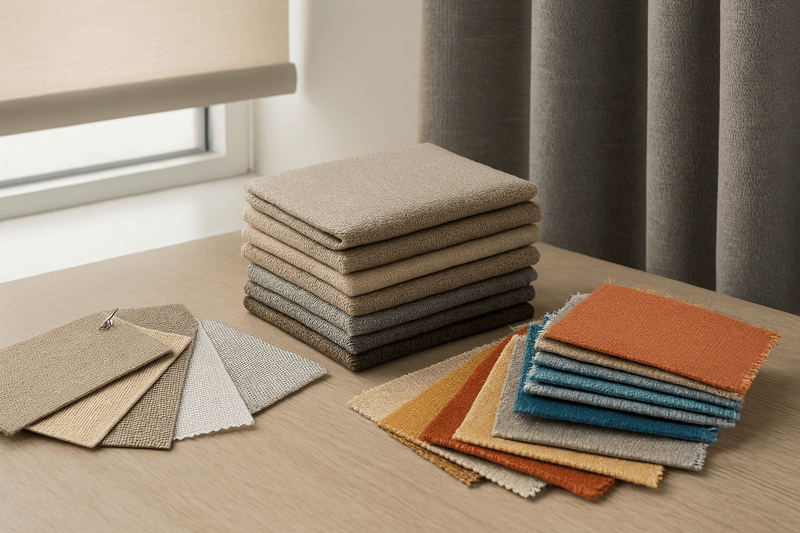
When it comes to window furnishings, the choice of fabric and finish isn’t just about looks—it directly affects the performance, longevity, and comfort of a space. Homeowners and designers alike are paying closer attention to how materials influence light control, energy efficiency, acoustic dampening, and interior style. With so many decisions to make, understanding fabric and finish options is now an essential part of the window treatment process.
Customisation has become the norm, not the exception. Whether your space leans toward sleek and modern or warm and traditional, selecting the right combination of texture, material, and colour may transform a room. It’s why options like Interior Blinds fabric and finish options for every style have gained popularity—they offer curated selections tailored for real homes and real needs.
Why Fabric and Finish Matter
Window furnishings aren’t just accessories. They serve a functional role—helping regulate indoor temperature, reduce glare, soften acoustics, and offer privacy. However, how well they perform depends heavily on the chosen fabric type and surface finish.
Take a simple roller blind, for instance. The same design can create completely different impressions depending on whether it’s made from sheer linen, blockout PVC, or thermal-backed polyester. Likewise, the finish on the curtain rod or blind base—be it natural timber, brushed chrome, or powder-coated aluminium—adds either harmony or contrast within the broader design scheme.
These choices affect more than style. They determine how easily the product is maintained, how well it ages over time, and how effective it is at controlling light and temperature. Fabrics with UV-resistant coatings, mould protection, or thermal properties offer extra durability in high-exposure or moisture-prone rooms. In contrast, decorative textures may be chosen for their softening effect or ability to tie into furnishings and flooring.
Exploring Popular Fabric Types
Not all fabrics are created equal. In living rooms, lightweight translucent materials may be preferred to diffuse natural light while maintaining privacy. Bedrooms, on the other hand, often call for heavier blockout fabrics that eliminate morning glare and improve sleep quality. In home offices or media rooms, dual-layer systems are increasingly used—combining sheers and blockouts for flexible light control throughout the day.
Some fabrics are engineered for performance. Thermal-backed textiles help regulate indoor temperature, especially valuable during Australia’s extreme seasonal changes. Others are chosen for texture or elegance—like velvets, linens, or woven blends. The key is to strike a balance between form and function.
You can view Interior Blinds fabric selections and finishes to explore how each material is suited to different environments and interior preferences.
Finishes That Complement or Contrast
Just as fabrics vary, so do the finishes applied to supporting elements—like curtain tracks, pelmets, or headrails. These finishes serve both decorative and protective purposes. Natural timber finishes offer warmth and a sense of authenticity, fitting well in heritage or coastal homes. Powder-coated finishes, on the other hand, are more aligned with minimalist and contemporary interiors, offering clean lines and durability.
The choice of finish can subtly echo other design elements within the room. A black matte blind base might pair beautifully with dark joinery, while a brushed nickel rod complements stainless steel appliances or tapware. In design, these seemingly minor choices often contribute the final polish that makes a space feel cohesive.
For ideas on combining materials and finishes thoughtfully, blogs like Blogrip’s recent home styling tips show how homeowners are layering natural and industrial textures to create depth and interest.
Coordinating Colour and Texture
Colour plays an obvious role in fabric and finish choices, but texture can be just as influential. Smooth, light-reflecting fabrics tend to make rooms feel brighter and more spacious, while textured weaves offer visual depth and tactility. Pairing textured fabrics with warm finishes like wood grain creates a comforting, layered look. Conversely, smooth finishes and crisp fabrics can convey modern minimalism.
When selecting colours, many homeowners lean towards neutral palettes—like greys, soft whites, and taupes—to ensure longevity and broad design compatibility. However, deeper tones like navy, charcoal, or olive green are now being embraced as grounding tones, especially in open-plan or multifunctional areas.
Matching or thoughtfully contrasting your blinds’ finish with other elements—such as floorboards, cabinetry, or even lighting hardware—can create visual cohesion throughout a home.
Customisation and Layering
One of the strongest trends in window design today is layering. This could involve combining blockout roller blinds with flowing sheer curtains, or pairing a textured roman shade with simple pelmets for added depth. With the right coordination of fabrics and finishes, layering offers not only aesthetic richness but also practical benefits—like enhanced insulation and flexible light control.
It’s worth noting that choosing the right combination of fabrics and finishes takes more than a visual match. You’ll also want to consider functional demands like humidity resistance in bathrooms, hypoallergenic materials in bedrooms, or easy-clean finishes in kids’ rooms.
To explore tailored solutions, you can browse Interior Blinds finishes and fabric choices which are designed to suit specific room conditions and architectural styles.
Trends Shaping Australian Interiors
Across Australia, design trends continue to evolve. Eco-conscious living has driven interest in recycled fabrics and sustainable finishes. Japandi-inspired interiors favour earthy tones, clean lines, and subtle textures. Meanwhile, homes with open plans or multi-use rooms are favouring dual-function window treatments—ones that work across different light levels and living activities.
Texture continues to dominate interior styling, and this applies equally to window treatments. Combining matte finishes with plush or woven fabrics, or mixing cool metals with soft neutrals, is helping to create visually inviting environments.
A recent Blogrip article on energy-efficient interiors also underscores the growing interest in performance-driven designs—particularly fabrics that reduce heat gain and improve thermal regulation, which can lead to measurable energy savings.
Final Thoughts
When chosen thoughtfully, fabric and finish options contribute to a well-resolved space—both in terms of functionality and style. The right blind or curtain is more than just a window covering; it’s an element that interacts with natural light, complements the furniture, and provides a tactile, visual layer that enhances the overall room experience.
Design professionals and homeowners alike now recognise that the value lies in the details. How a curtain falls, the sheen of a blind bracket, the texture of a sheer panel—all these elements work together to create harmony.
By consulting a trusted supplier such as Interior Blinds fabric and finish options for every style, you can access expertly curated combinations that reflect not just current trends, but timeless design thinking.
When fabric meets finish with intention, windows stop being an afterthought and start becoming design centrepieces.

Leave a Reply